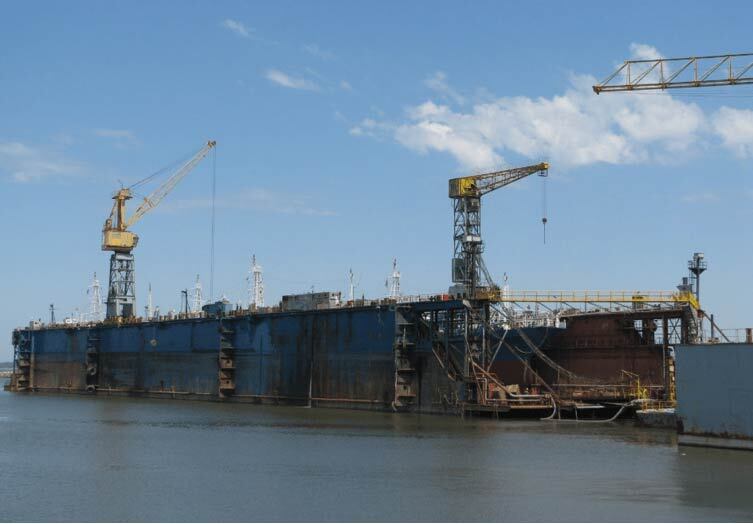Are ToughSonic® Sensors Tough Enough for Critical Floating Dry Docks?
Dry docks are a crucial part of nautical life, but not many know what they are used for—or how ToughSonic® sensors make a difference within them.
Dry Docks vs. Floating Dry Docks
Commonly used for construction, maintenance, and repair of ships, a dry dock is a narrow vessel that is flooded with water to allow a load to be floated in. When the boat is secure inside, the water is drained, the dock rises, and the load is able to rest on the dry platform. 
A floating dry dock takes the form of a “U” structure. Many sea-going small and mid-size vessels utilize floating dry docks. A ship is brought near the channel where the floating dry dock will partly submerge itself, then the ship is slid inside the dock. Once the ship is in position, the floating dock drains the water from its hollow floors and walls to rise and support the vessel for maintenance or repair. The whole process takes about 8 hours.
Floating dry docks have advantages over regular dry docks. They can be...
- Installed near or away from the shore inside the harbor, making them a portable and space-saving structure
- Aft or forward trim by ballasting the dock, which further assists the ship or the damaged vessel
- Altered and increased in size, in all dimensions, by extensive retrofitting/rebuilding
Where Do Ultrasonic Sensors Come Into Play?
Based in Uruguay, Asistechio Ltd. needed a high quality, sensitive level sensor to monitor all aspects of floating dry dock operations, including submersion, leveling, and strain control. They selected Senix's ToughSonic ultrasonic sensors due to their tough design: 316 stainless steel housings, potted and protected electronics, and an IP68 rating.
Asistechio was previously using bubbler level sensor technology to measure liquid levels, with one sensor in each ballast tube, but the sensors couldn't endure the expected operating temperature and humidity range needed for their operations. After rigorous testing with Senix's sensors, Horachio Venturino of Asistechio Ltd. stated, “Our floating dry dock project is advancing without any problems from the ToughSonics. I would say it's a pleasure to work with these superb quality sensors.”
Asistechio’s project involved 24 tanks that required liquid level measurements in both river and sea applications. Multiple sensors measured levels in vertical tanks used to submerge and raise the dock. A ToughSonic 30 sensor was mounted in the top of each ballast tube within a closed air pouch, or "bell"—a tube of 32 inches long and 8 inches diameter. The tube’s length was calculated so that at the maximum depth, the water level stopped at around 32 cm below the sensors’ surface to maintain the minimum required working range.
ToughSonic 30 sensors were utilized to measure both the tide and the dock’s inner ballast tanks water levels. Additionally, ToughSonic 50 sensors were used to monitor the dry dock’s outer ballast tanks water levels, plus to measure the whole dock freeboard and draft. These were mounted high on each of the dock’s corners, as well as on the middle of each side.
“We have successfully completed the floating dry dock project for which we bought ToughSonic sensors," Venturino later reported. "We owe that to Senix sensors' superb quality, plus the versatility of their configuration. Totally satisfied!”
For more information on how Senix can help with your application, contact us at info@senix.com or click here.

